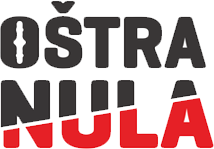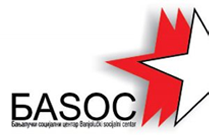When, in November 2024, the chimney of the Cellulose and Viscose Factory “Incel” finally collapsed after the third attempt, all that remained was to erect a tombstone for what was once a giant of the chemical industry—not only in Banja Luka but also in the former SFR Yugoslavia.
Founded in 1954, “Incel” was the main industrial conglomerate during the socialist era, employing up to 6,500 workers. The first production facilities were built between 1955 and 1957. Over time, the factory expanded, and between 1970 and 1981, several new production lines were constructed as part of the Complex Organization of Associated Labor (SOUR) industrial complex.
The conglomerate included units such as “Celuloza,” “Viskoza,” “Elektroliza,” “Energetika,” Industrial Plantations, and several smaller ones, achieving a total annual export of over 100 million dollars. “Incel” had joint ventures with “Šipad,” “Krivaja,” and other large Bosnian companies. It was also one of the first major economic systems to establish a Computer Center for Automatic Data Processing.
According to available data, besides the factory workers, around 25,000 family members and the city itself also benefited directly from “Incel”.
In the best tradition of socialist/worker self-management, “Incel” built a series of worker resorts along the Adriatic coast, as well as a sports and recreational zone with an Olympic-sized swimming pool right next to the factory.
During the 1970s and 1980s—considered the golden age of “Incel”—the factory employed 200 engineers and a large number of highly qualified workers.
Then Came the War
And the transition of ownership, which, like rust, destroyed “Incel”—as it did almost every industrial complex in Bosnia and Herzegovina.
Testimonies of a Better Past
Numbers and statistics cannot describe how well “Incel” functioned as vividly as its former employees can.
Mirko Milkić, one of the former directors, says he hasn’t had the courage to pass through the factory gates for more than a decade—gates that once saw more than 6,500 workers enter daily. He firmly believes that “Incel” could have survived and that some production units, or OOURs (Basic Organizations of Associated Labor), could still be operating and exporting their products today.
He recalls that “Viskoza” exported almost its entire production abroad, mainly to Germany.
“Thanks to that, ‘Incel’ had significant foreign currency funds, which we ‘loaned’ to other Yugoslav companies. So why did ‘Viskoza’ have to collapse? Who had an interest in its destruction?” Milkić asks.
However, the goal of the transformation—first from social ownership to state ownership, and then privatization driven solely by the interests of a small group in power, without any strategy—never included restructuring. According to Milkić, had restructuring been carried out, the factory would not have been destroyed.
Even in the late 1980s, it should be noted, the Banja Luka authorities lacked a broader vision for the city’s development.
“Back in 1986, I believe, the municipal assembly of Banja Luka rejected a proposal to connect ‘Incel’s’ power plant with the city’s heating plant. Because of that, Banja Luka now has catastrophic heating issues—when all it needed was to connect ‘Incel’s’ power plant with the heating plant, and today, Banja Luka wouldn’t have heating problems,” Milkić explains.
Anđelka Eror, also a former “Incel” worker, shares positive memories of working at the factory until the war broke out.
*”I started working in ‘Incel’ in a textile laboratory within the Viscose Factory. It was one of the best-equipped laboratories in ‘Viskoza’. The Textile Institute in Ljubljana didn’t have the equipment that we had at that time.
The reward system was excellent. If a job was difficult, the reward percentage increased. Overtime was rewarded with a 50% increase in wages. Masters were paid more than engineers because they stayed overtime, working on repairs.
During the war, I worked in the Cellulose Factory, where we processed paper. Used paper came to us from all over Europe, and we had to separate the printed parts—it was highly toxic. Many people developed lung diseases. The supervisor who opened the plant died of lung cancer four months later.
Four of us worked in the Research Center, developing and creating new fibers. We competed and won second place in the national (Yugoslavia) competition in Rijeka for two consecutive years.
When we discovered a new type of fiber, we produced 40 tons of it. Every kilogram was bought by ‘Sanitex’ from Velika Kladuša. They offered us a deal to produce exclusively for them, set our own price, and sell to no one else.
In India, the Viscose Factory was a major exporter. When viscose plants were built in India and East Germany, one of our mechanical engineers worked on their construction. When those plants started operating, ‘Incel’ experts were sent to East Germany, where they earned in three months what they would have made in ‘Incel’ in three years.
On the eve of the war, ‘Incel’ had purchased all the machinery needed for computerizing production. The machines were paid for but remained stuck in Trieste, never crossing the border. The director took me and a colleague to Sremska Mitrovica to see how computerization worked. We were supposed to go to the U.S. next to study the details of computer-controlled production.”*
Then the War Started
*”The war was terrible. There were huge obstructions. Not a single penny was allocated—not even for minor machine repairs. The entire management, from plant supervisors and technologists to directors, had only one goal—to sell everything we had left.
During the war, we went 18 months without pay. I don’t know why we were so foolish to keep working. We probably thought we’d eventually get paid, that it was important to keep working… But we never got that money.
For all those months, I was eventually given 1,000 marks—just enough to buy a vacuum cleaner.
At the end of the war, only a few parts of ‘Incel’ survived: ‘Celex,’ ‘Celkon,’ ‘Energana,’ and a small portion of the Viscose Factory. But even those were dismantled piece by piece.
Now, neither the Viscose Factory nor the Cellulose Factory exists, and the equipment has somehow ended up in private hands.”*
The Post-War Era and Privatization
After the war, there were attempts to restart production, but core manufacturing never resumed. Through restructuring and privatization, ‘Incel’ was divided into ten companies, plus what is now the “Incel” Business Zone.
Today, around 60 businesses operate in leased administrative buildings within this business zone. The current state of this industrial giant has led Banja Luka residents to nickname it “Banja Luka’s Fukushima”, comparing it to the Japanese nuclear plant destroyed by a tsunami.
Many visitors to cultural events in the Social and Cultural Center ‘Incel’—especially those unfamiliar with the area—ask if the factory was bombed, because they can’t believe such massive destruction was deliberate.
During privatization, most “Incel” companies ended up in bankruptcy, with assets landing in the hands of tycoons. One striking example is “Viskoza”, whose famous “Building 140” was acquired by the businessman Đorđe Davidović, who later sold it to the RS government for 13 million marks.
“Incel” became an example of textbook tycoon privatization—where the new owners bought state-owned businesses, sold off assets, and then drove the companies into bankruptcy.



